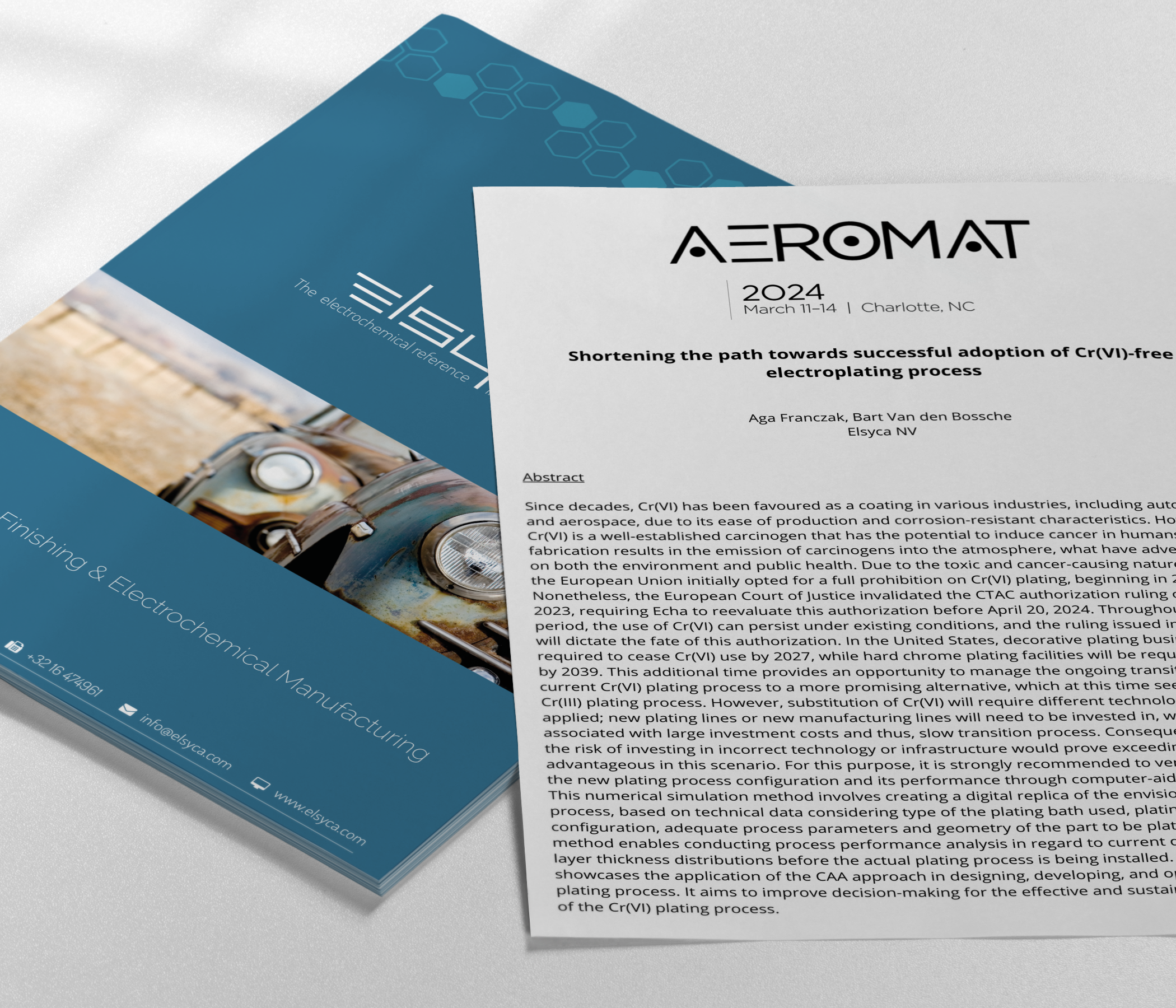
Shortening the path towards successful adoption of Cr(VI)-free electroplating process (AEROMAT 2024)
AEROMAT 2024 presentation

Shortening the path towards successful adoption of Cr(VI)-free electroplating process (AEROMAT 2024)
Aga Franczak; Bart Van den Bossche, Elsyca NV.
Abstract
Since decades, Cr(VI) has been favoured as a coating in various industries, including automotive and aerospace, due to its ease of production and corrosion-resistant characteristics. However, Cr(VI) is a well-established carcinogen that has the potential to induce cancer in humans, and its fabrication results in the emission of carcinogens into the atmosphere, what have adverse impacts on both the environment and public health. Due to the toxic and cancer-causing nature of Cr(VI), the European Union initially opted for a full prohibition on Cr(VI) plating, beginning in 2024. Nonetheless, the European Court of Justice invalidated the CTAC authorization ruling on April 21, 2023, requiring Echa to reevaluate this authorization before April 20, 2024. Throughout this interim period, the use of Cr(VI) can persist under existing conditions, and the ruling issued in April 2024 will dictate the fate of this authorization. In the United States, decorative plating businesses will be required to cease Cr(VI) use by 2027, while hard chrome plating facilities will be required to do so by 2039. This additional time provides an opportunity to manage the ongoing transition from the current Cr(VI) plating process to a more promising alternative, which at this time seems to be the Cr(III) plating process. However, substitution of Cr(VI) will require different technologies to be applied; new plating lines or new manufacturing lines will need to be invested in, what is associated with large investment costs and thus, slow transition process. Consequently, reducing the risk of investing in incorrect technology or infrastructure would prove exceedingly advantageous in this scenario. For this purpose, it is strongly recommended to verify the efficacy of the new plating process configuration and its performance through computer-aided analysis (CAA). This numerical simulation method involves creating a digital replica of the envisioned plating process, based on technical data considering type of the plating bath used, plating tank configuration, adequate process parameters and geometry of the part to be plated. The CAA method enables conducting process performance analysis in regard to current density and metal layer thickness distributions before the actual plating process is being installed. This presentation showcases the application of the CAA approach in designing, developing, and optimizing the new plating process. It aims to improve decision-making for the effective and sustainable replacement of the Cr(VI) plating process.
